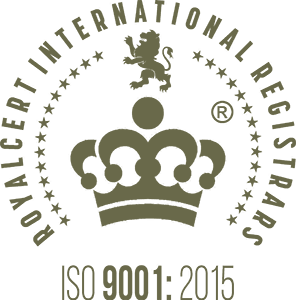Remote air traffic control towers (ATC) are an attractive and cost-effective alternative to onsite towers and are already being used at rural and inaccessible airports in Sweden as well as at the very busy London City Airport, a major international airport.
How do remote towers work?
Remote ATC towers were first trialled at rural airports particularly where there were legacy policies that required an open tower for flight operations to take place. Remote towers allowed controllers to monitor these airfields from their locations many miles away but with the same access they would have had sitting in a traditional tower on location. This was also more cost-effective as rural and remote airfields tend not to see a lot of traffic so that a physical tower and controller presence at all times becomes unnecessary expense for underutilized facilities.
Remote ATC towers – essentially a 360 degree live feed of an airfield transmitted via a number of high-definition cameras to screens at manned airports – are operated by controllers sitting in busy airport locations many miles away. Remote ATC services for small airports are effectively an on-demand ATC service and therefore avoids the waste of resources on expensive infrastructure and personnel bound to be under-utilised.
What are the benefits of remote air traffic control towers?
Using digital technology can help improve situational awareness thereby enabling controllers to make informed decisions quickly and safely. For instance,
- The use of high-definition pan-tilt-zoom cameras delivers precise magnification of up to 30 times. This allows controllers to gain an in-depth view for detailed inspection.
- As remote air traffic control towers can be used to monitor and manage multiple airports, this can deliver significant savings for smaller airports.
- A live feed of call signs, aircraft speed and altitude as well as weather conditions, from a variety of sources including radar, can be overlaid upon the high-definition viewing screens.
Where are the first airports to use remote air traffic control located?
The first airport to use remote air traffic control services was a small rural operation in Dalarna, Sweden, the Scandinavian Mountains Airport. ATC services for this airport provided by a tower equipped with 17 wide-angled cameras but located 350km away in Sundsvall.
London City Airport is the first major international to be using a remote ATC service. Air traffic controllers based at the UK’s national air traffic control station (NATS) get a live feed of the entire airport using 16 high-definition cameras and 14 HD screens mounted on a tower built a at a cost of £20m.
Do all airports require remote air traffic control services?
All airports don’t require ATC services but there is a perception that they do even if they are infrequently used potentially because authorities worry about their need in emergency situations. This perception is a holdover from the early days of air travel when radio coverage was limited and patchy and in any case piston airliners, which preceded modern jets, flew below radio frequency altitudes. There was lots of airspace and locations where a pilot might have no radio contact with air traffic control. The only way for controllers to track aircraft was for pilots to file a flight plan with multiple control towers as designated reporting points at designated times. The tower at each destination was required to know and log an aircrafts arrival. In case the aircraft did not arrive, the reporting points would be used to triangulate and define the path for a search and rescue operation.
Modern jets fly at much higher altitudes than piston jets and have multiple modes of communication. while the advent of radar, the internet and cellular phones has made on-site traffic control towers more of an extravagance than a necessity at many small or remote airports.
Indeed a large number of small airports, such as rural, isolated or infrequently used airstrips don’t even need remote ATC coverage as modern technology offers many more innovative ways of tracking aircraft and ensuring the safety of both he pilot and their passengers.
What are the alternatives to air traffic control towers?
One such innovation is MicroTower, an AI-powered AWOS alternative which provides pilots with critical information when they need it most and tower-like services to any airport or heliport. A ‘must have’ for flight school operations, remote strips or active, uncontrolled field, John Croke of Kitplanes describes it as a “miniature, solar-powered, self-contained advanced air traffic advisory system (AATAS) for non-towered airports. It provides brief traffic and weather advisories, speaking to pilots over an airport’s existing radio traffic frequency, informing pilots of the system’s presence and how to use it.
With the click of a mic, a pilot receives real-time weather information, including wind shear and crosswinds. The system is smart enough to transmit only the most relevant information if the frequency is busy. A unique two-way radio check feature allows pilots to verify both signal strength and clarity of their radios prior to takeoff.”
Currently operating at multiple locations across the USA as well as the Middle East, Far East and India this cost-effective system dramatically improves safety and traffic control in non-towered locations.
If you’re a pilot or a business with operations in remote locations and would like to see MicroTower services in action or a demo at your location, please get in touch with a member of our team.



